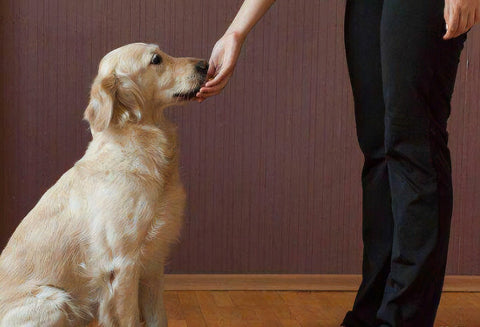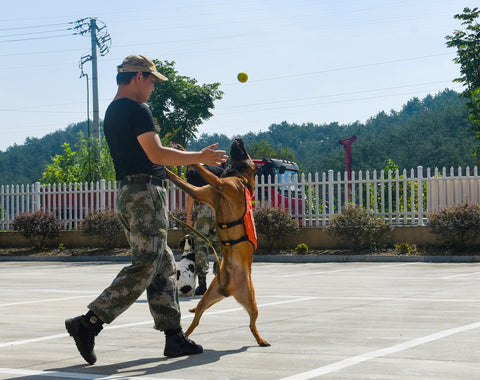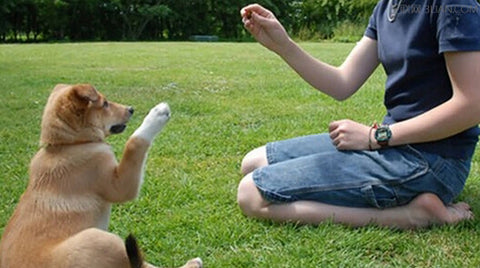If you're interested in using positive reinforcement techniques to train your pet, here's a step-by-step guide to get started:
Step 1: Identify the behavior you want to reinforce

Before you begin training, it's important to identify the behavior you want to reinforce. Be specific and clear about what you want your pet to do. For example, if you're training your dog to sit on command, the behavior you want to reinforce is sitting down with his rear end on the ground.
Step 2: Choose a reward
The next step is to choose a reward that your pet will find motivating. This could be anything from a treat to a toy to verbal praise or physical affection. Make sure the reward is something your pet really enjoys and is willing to work for.
Step 3: Start small

Start with small steps and work your way up. For example, if you're training your dog to sit on command, you might start by rewarding him for simply looking at you when you say his name. Then you can progress to rewarding him for taking a step towards you, then for putting his rear end on the ground.
Step 4: Use positive reinforcement consistently
Consistency is key when it comes to positive reinforcement training. Make sure you reward your pet every time he exhibits the desired behavior. If you only reward him occasionally, he may become confused and the training will be less effective.
Step 5: Ignore or redirect unwanted behavior

When your pet exhibits unwanted behavior, it's important to ignore it or redirect it to a more desirable behavior. For example, if your dog jumps on you, turn away and ignore him until he calms down. Then reward him for sitting or lying down instead.
Step 6: Practice, practice, practice
Repetition is crucial when it comes to positive reinforcement training. Make sure you practice the desired behavior regularly in a variety of settings and situations. This will help your pet understand that the behavior is expected of him regardless of the situation.
Step 7: Gradually reduce rewards

As your pet becomes more skilled at the desired behavior, you can gradually reduce the frequency of rewards. However, it's important to continue to reward him occasionally to reinforce the behavior and prevent it from fading.
Benefits of positive reinforcement training
There are many benefits to using positive reinforcement training with your pet. Some of the key benefits include:
Effective: Positive reinforcement training has been proven to be highly effective in teaching pets new behaviors and modifying existing ones.
Humane: Positive reinforcement training is a humane approach that doesn't involve physical punishment or harsh discipline.

Builds trust: Positive reinforcement training helps build trust between you and your pet. By rewarding desired behaviors, you're showing your pet that you're pleased with him and that he can trust you.
Improves communication: Positive reinforcement training improves communication between you and your pet. By rewarding desired behaviors, you're giving your pet clear feedback about what you expect from him.

Creates a positive association: Positive reinforcement training creates a positive association between the behavior and the reward. This makes it more likely that your pet will repeat the behavior in the future.
Overall, positive reinforcement training is a highly effective and humane approach to teaching pets new behaviors and modifying existing ones. By following the steps outlined above, you can begin using positive reinforcement techniques to train your pet and enjoy the many benefits that come with this approach.
